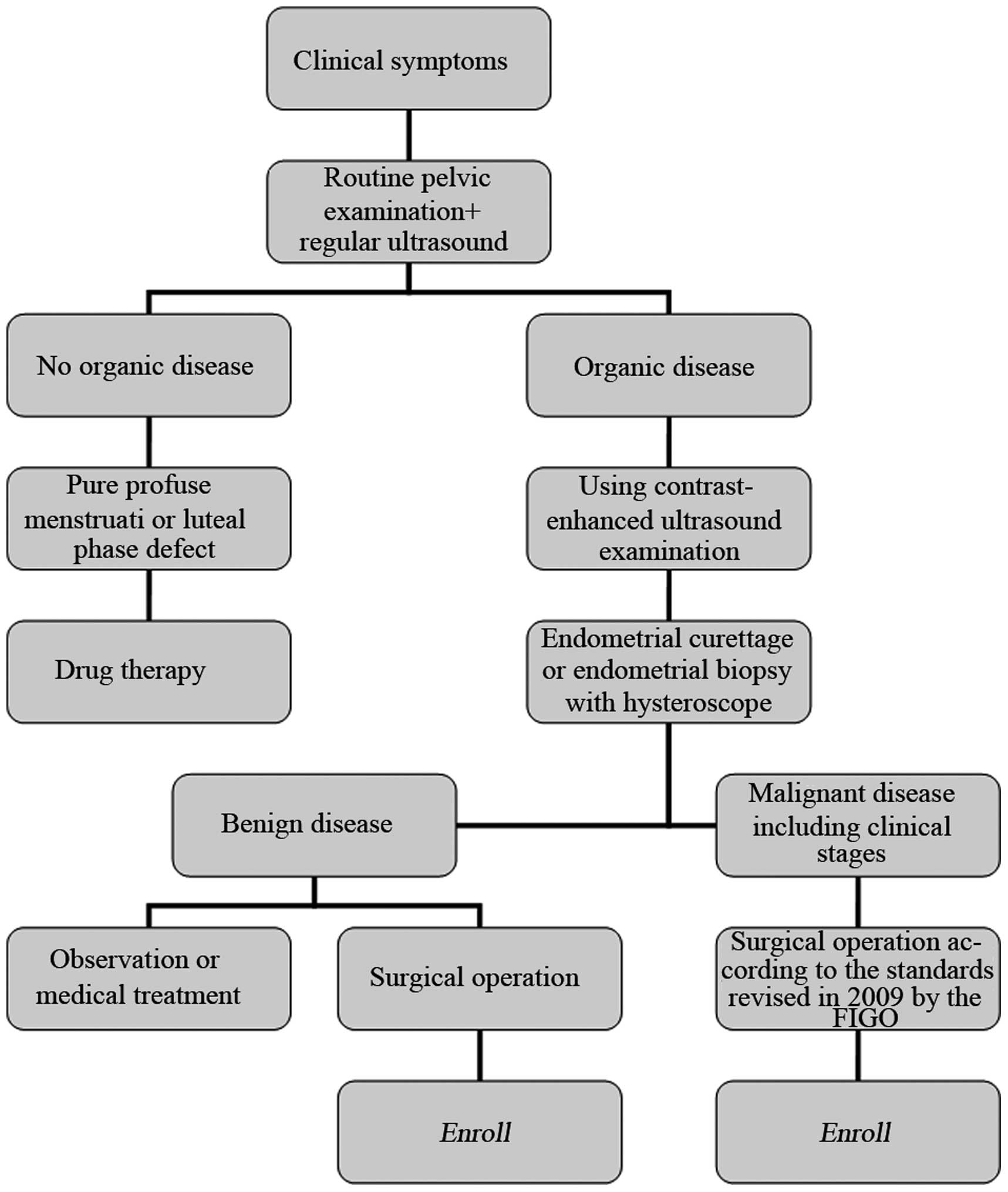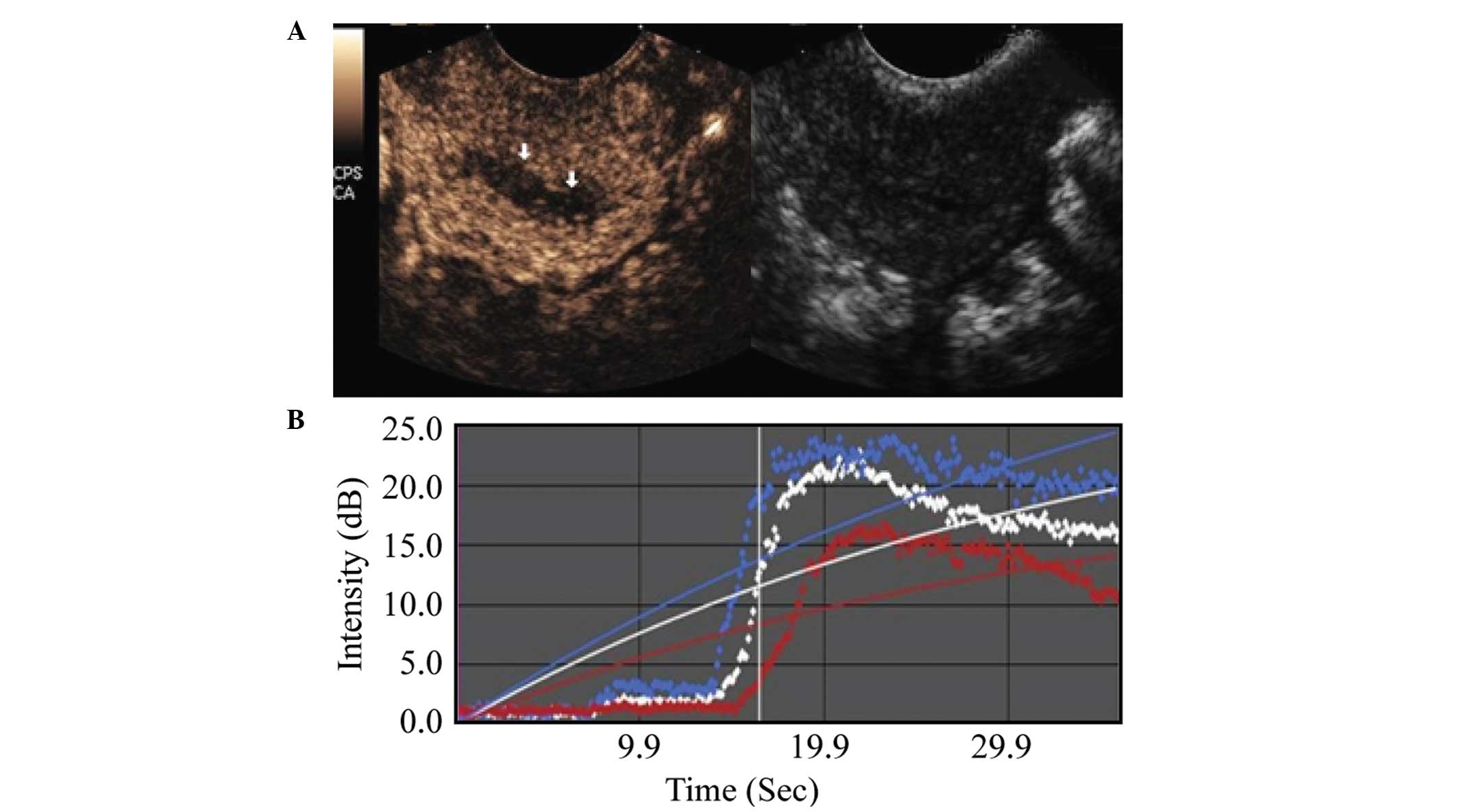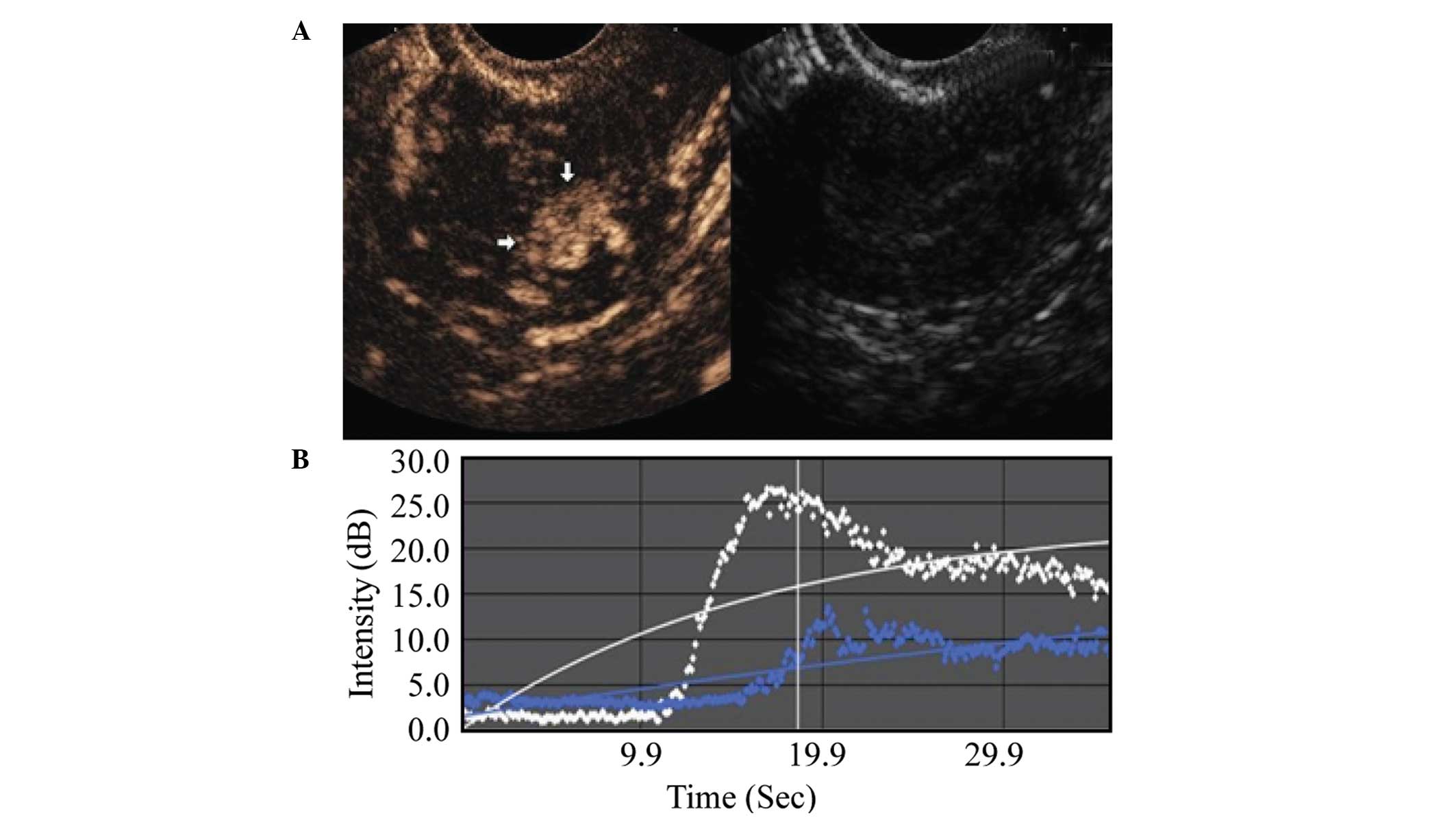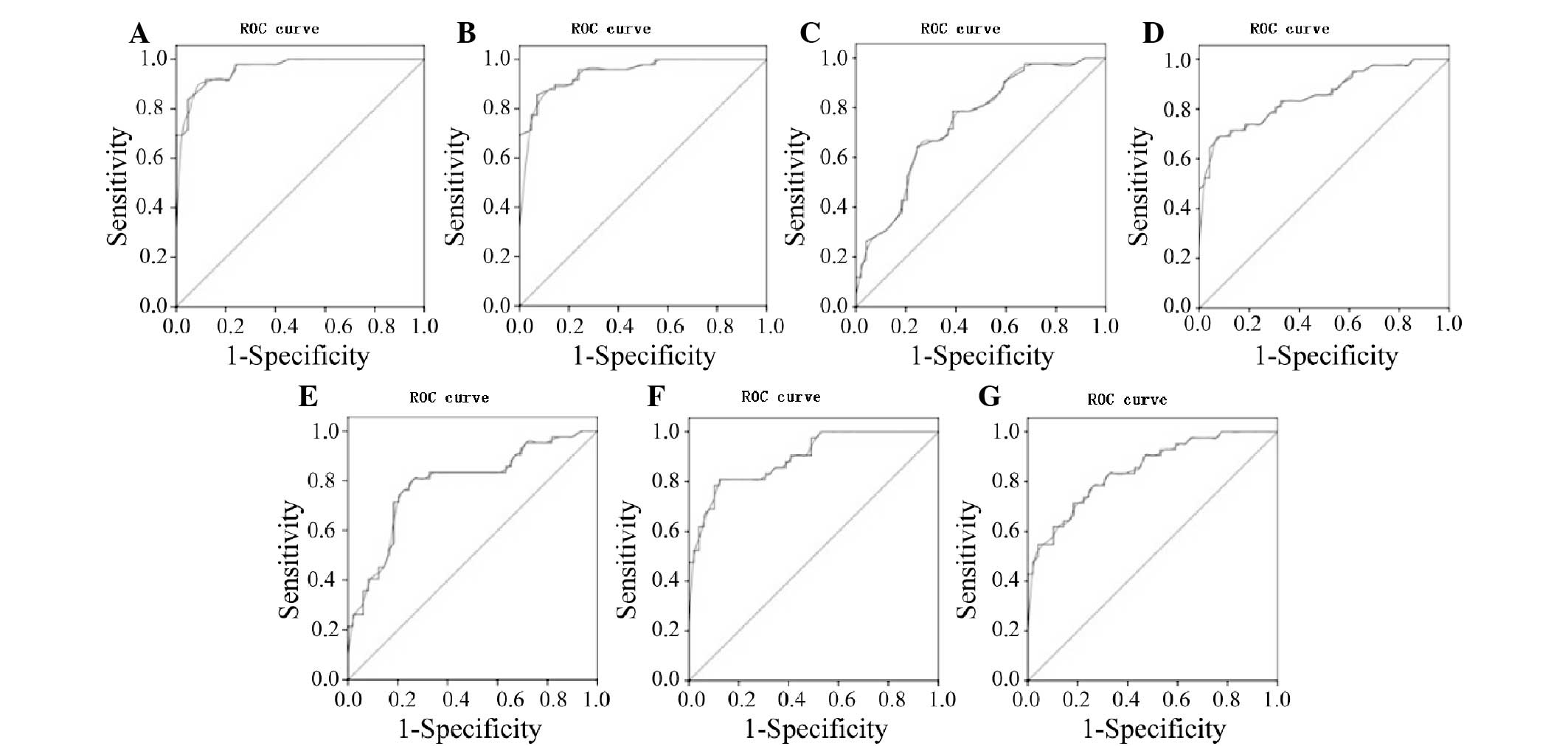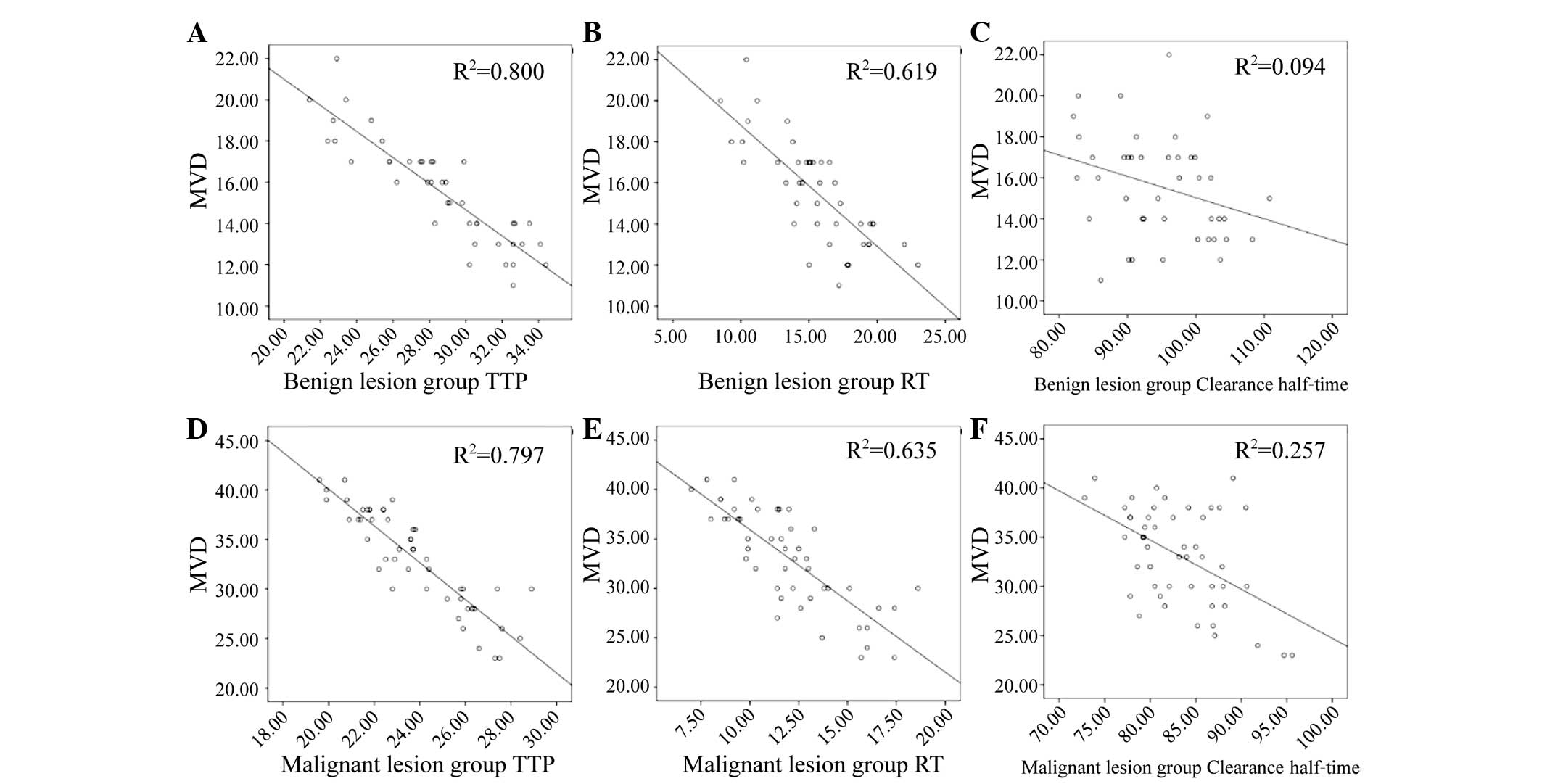|
1
|
Correas JM, Bridal L, Lesavre A, Méjean A,
Claudon M and Hélénon O: Ultrasound contrast agents: Properties,
principles of action, tolerance and artifacts. Eur Radiol.
11:1316–1328. 2001. View Article : Google Scholar : PubMed/NCBI
|
|
2
|
Dong XQ, Shen Y, Xu LW, Xu CM, Bi W and
Wang XM: Contrast-enhanced ultrasound for detection and diagnosis
of renal clear cell carcinoma. Chin Med J (Engl). 122:1179–1183.
2009.PubMed/NCBI
|
|
3
|
Lang SA, Moser C, Gehmert S, Pfister K,
Hackl C, Schnitzbauer AA, Stroszczynski C, Schlitt HJ, Geissler EK
and Jung EM: Contrast-enhanced ultrasound (CEUS) detects effects of
vascular disrupting therapy in an experimental model of gastric
cancer. Clin Hemorheol Microcirc. 56:287–299. 2014.PubMed/NCBI
|
|
4
|
Wei X, Li Y, Zhang S, Li X, Wang H, Yong
X, Wang X, Li X and Gao M: Evaluation of microvascularization in
focal salivary gland lesions by contrast-enhanced ultrasonography
(CEUS) and Color Doppler sonography. Clin Hemorheol Microcirc.
54:259–271. 2013.PubMed/NCBI
|
|
5
|
Kearor CS, Lindner JR, Belcik JT, Bishop
CV and Slayden OD: Contrast-enhanced ultrasound reveals real-time
spatial changes in vascular perfusion during early implantation in
the macaque uterus. Fertil Steril. 95:1316–1321.e1-3. 2011.
View Article : Google Scholar : PubMed/NCBI
|
|
6
|
Liu Y, Tian JW, Xu Y and Cheng W: Role of
transvaginal contrast-enhanced ultrasound in the early diagnosis of
endometrial carcinoma. Chin Med J (Engl). 125:416–421.
2012.PubMed/NCBI
|
|
7
|
Fellner C, Prantl L, Rennert J,
Stroszczynski C and Jung EM: Comparison of
time-intensity-curve-(TIC-) analysis of contrast-enhanced
ultrasound (CEUS) and dynamic contrast-enhanced (DCE) MRI for
postoperative control of microcirculation in free flaps-first
results and critical comments. Clin Hemorheol Microcirc.
48:187–198. 2011.PubMed/NCBI
|
|
8
|
Geis S, Gehmert S, Lamby P, Zellner J,
Pfeifer C, Prantl L and Jung EM: Contrast enhanced ultrasound
(CEUS) and time intensity curve (TIC) analysis in compartment
syndrome: First results. Clin Hemorheol Microcirc. 50:1–11.
2012.PubMed/NCBI
|
|
9
|
Wang Y, Li L, Wang YX, Cui NY, Zou SM,
Zhou CW and Jiang YX: Time-intensity curve parameters in rectal
cancer measured using endorectal ultrasonography with sterile
coupling gels filling the rectum: Correlations with tumor
angiogenesis and clinicopathological features. Biomed Res Int.
2014:5878062014. View Article : Google Scholar : PubMed/NCBI
|
|
10
|
Pecorelli S: Revised FIGO staging for
carcinoma of the vulva, cervix, and endometrium. International Int
J Gynaecol Obstet. 105:103–104. 2009. View Article : Google Scholar
|
|
11
|
Weidner N, Semple JP, Welch WR and Folkman
J: Tumor angiogenesis and metastasis-correlation in invasive breast
carcinoma. N Engl J Med. 324:1–8. 1991. View Article : Google Scholar : PubMed/NCBI
|
|
12
|
Fischerova D: Ultrasound scanning of the
pelvis and abdomen for staging of gynecological tumors: A review.
Ultrasound Obstet Gynecol. 38:246–266. 2011. View Article : Google Scholar : PubMed/NCBI
|
|
13
|
Steppan I, Reimer D, Müller-Holzner E,
Marth C, Aigner F, Frauscher F, Frede T and Zeimet AG: Breast
cancer in women: Evaluation of benign and malignant a axillary
lymph nodes with contrast-enhanced ultrasound. Ultraschall Med.
31:63–67. 2010.(In English, German). View Article : Google Scholar : PubMed/NCBI
|
|
14
|
Xu HX: Contrast-enhanced ultrasound: The
evolving applications. World J Radiol. 1:15–24. 2009. View Article : Google Scholar : PubMed/NCBI
|
|
15
|
Claudon M, Dietrich CF, Choi BI, Cosgrove
DO, Kudo M, Nolsøe CP, Piscaglia F, Wilson SR, Barr RG, Chammas MC,
et al: Guidelines and good clinical practice recommendations for
contrast enhanced ultrasound (CEUS) in the liver-update 2012: A
WFUMB-EFSUMB initiative in cooperation with representatives of
AFSUMB, AIUM, ASUM, FLAUS and ICUS. Ultrasound Med Biol.
39:187–210. 2013. View Article : Google Scholar : PubMed/NCBI
|
|
16
|
Cosgrove D and Lassau N: Imaging of
perfusion using ultrasound. Eur J Nucl Med Mol Imaging. 37(Suppl
1): S65–S85. 2010. View Article : Google Scholar : PubMed/NCBI
|
|
17
|
Poret-Bazin H, Simon EG, Bleuzen A,
Dujardin PA, Patat F and Perrotin F: Decrease of uteroplacental
blood flow after feticide during second-trimester pregnancy
termination with complete placenta previa: Quantitative analysis
using contrast-enhanced ultrasound imaging. Placenta. 34:1113–1115.
2013. View Article : Google Scholar : PubMed/NCBI
|
|
18
|
Dutta S, Wang FQ, Fleischer AC and Fishman
DA: New frontiers for ovarian cancer risk evaluation: Proteomics
and contrast-enhanced ultrasound. AJR Am J Roentgenol. 194:349–354.
2010. View Article : Google Scholar : PubMed/NCBI
|
|
19
|
Testa AC, Ferrandina G, Fruscella E, Van
Holsbeke C, Ferrazzi E, Leone FP, Arduini D, Exacoustos C, Bokor D,
Scambia G and Timmerman D: The use of contrasted transvaginal
sonography in the diagnosis of gynecologic diseases: A preliminary
study. J Ultrasound Med. 24:1267–1278. 2005.PubMed/NCBI
|
|
20
|
Balleyguier C, Opolon P, Mathieu MC,
Athanasiou A, Garbay JR, Delaloge S and Dromain C: New potential
and applications of contrast-enhanced ultrasound of the breast: Own
investigations and review of the literature. Eur J Radiol.
69:14–23. 2009. View Article : Google Scholar : PubMed/NCBI
|
|
21
|
Xiang H, Huang R, Cheng J, Gulinaer S, Hu
R, Feng Y and Liu H: Value of three-dimensional contrast-enhanced
ultrasound in the diagnosis of small adnexal masses. Ultrasound Med
Biol. 39:761–768. 2013. View Article : Google Scholar : PubMed/NCBI
|
|
22
|
Zhang XL, Zheng RQ, Yang YB, Huang DM,
Song Q, Mao YJ, Li YH and Zheng ZJ: The use of contrast-enhanced
ultrasound in uterine leiomyomas. Chin Med J (Engl). 123:3095–3099.
2010.PubMed/NCBI
|
|
23
|
Zhu Y, Chen Y, Jiang J, Wang R, Zhou Y and
Zhang H: Contrast-enhanced harmonic ultrasonography for the
assessment of prostate cancer aggressiveness: A preliminary study.
Korean J Radiol. 11:75–83. 2010. View Article : Google Scholar : PubMed/NCBI
|
|
24
|
Arthuis CJ, Novell A, Escoffre JM, Patat
F, Bouakaz A and Perrotin F: New insight into uteroplacental
perfusion: Quantitative analysis using Doppler and
contrast-enhanced ultrasound imaging. Placenta. 34:424–431. 2013.
View Article : Google Scholar : PubMed/NCBI
|
|
25
|
Aoki S, Hattori R, Yamamoto T, Funahashi
Y, Matsukawa Y, Gotoh M, Yamada Y and Honda N: Contrast-enhanced
ultrasound using a time-intensity curve for the diagnosis of renal
cell carcinoma. BJU Int. 108:349–354. 2011. View Article : Google Scholar : PubMed/NCBI
|
|
26
|
Xu M, Xie XY, Liu GJ, Xu HX, Xu ZF, Huang
GL, Chen PF, Luo J and Lü MD: The application value of
contrast-enhanced ultrasound in the differential diagnosis of
pancreatic solid-cystic lesions. Eur J Radiol. 81:1432–1437. 2012.
View Article : Google Scholar : PubMed/NCBI
|
|
27
|
Salvatore V, Borghi A, Sagrini E, Galassi
M, Gianstefani A, Bolondi L and Piscaglia F: Quantification of
enhancement of focal liver lesions during contrast-enhanced
ultrasound (CEUS). Analysis of ten selected frames is more simple
but as reliable as the analysis of the entire loop for most
parameters. Eur J Radiol. 81:709–713. 2012. View Article : Google Scholar : PubMed/NCBI
|
|
28
|
Czekierdowski A, Czekierdowska S, Czuba B,
Cnota W, Sodowski K, Kotarski J and Zwirska-Korczala K: Microvessel
density assessment in benign and malignant endomerrial changes. J
Physiol Pharmacol. 59(Suppl 4): S45–S51. 2008.
|
|
29
|
Badea AF, Tamas-Szora A, Clichici S,
Socaciu M, Tăbăran AF, Băciut G, Cătoi C, Mureşan A, Buruian M and
Badea R: Contrast enhanced ultrasonography (CEUS) in the
characterization of tumor microcirculation. Validation of the
procedure in the animal experimental model. Med Ultrason. 15:85–94.
2013. View Article : Google Scholar : PubMed/NCBI
|
|
30
|
Shiyan L, Pintong H, Zongmin W, Fuguang H,
Zhiqiang Z, Yan Y and Cosgrove D: The relationship between enhanced
intensity and microvessel density of gastric carcinoma using double
contrast-enhanced ultrasonography. Ultrasound Med Biol.
35:1086–1091. 2009. View Article : Google Scholar : PubMed/NCBI
|
|
31
|
Wang J, Lv F, Fei X, Cui Q, Wang L, Gao X,
Yuan Z, Lin Q, Lv Y and Liu A: Study on the characteristics of
contrast-enhanced ultrasound and its utility in assessing the
microvessel density in ovarian tumors or tumor-like lesions. Int J
Biol Sci. 7:600–666. 2011. View Article : Google Scholar : PubMed/NCBI
|
|
32
|
Fleischer AC, Lyshchik A, Jones HW III,
Crispens MA, Andreotti RF, Williams PK and Fishman DA: Diagnostic
parameters to differentiate benign from malignant ovarian masses
with contrast-enhanced transvaginal sonography. J Ultrasound Med.
28:1273–1280. 2009.PubMed/NCBI
|



